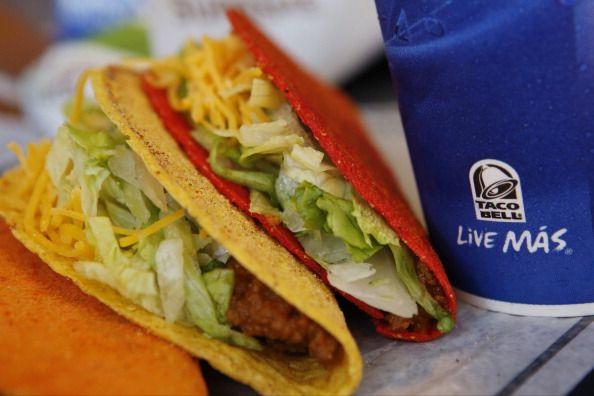Earnings Preview: Can Coca-Cola Co. (KO) And Yum Brands Inc. (YUM) Adapt To Healthier Tastes?

The palate has proved to be a finicky customer for major food and beverage industries, especially as tastes gravitate toward the natural and organic, and away from the processed products on which those companies have built themselves.
PepsiCo (PEP) reported Monday a first-quarter profit of $5.15 billion that beat expectations, but nevertheless declined 6 percent from a year earlier. Total sales dropped 3 percent year on year to $11.86 billion, representing the sixth straight quarter of decline for the company. Its numbers might have been worse had it not been for PepsiCo's snacks, like Cheetos and Lay's, which offset waning demand for soda as customers become warier of sugary drinks.
Now, investors and food and beverage industry observers will be paying close attention to what kind of predicaments, if any, other major industry players Coca-Cola (KO) and Yum Brands Inc. (YUM), the fast-food company that operates Taco Bell, KFC and other major brands, could find themselves in when they report their first-quarter earnings Wednesday.
In the first half of 2013, products marked organic made up 6.3 percent of the global food and beverage market, according to Netherlands-based Innova Market Insights. By the first half of 2015, foods labeled organic made up 9.5 percent of the global market. Similar trends are also taking root among consumers, such as the desire to eat foods they believe to be natural or old-fashioned — in other words, the "real" food that is the antithesis of the staples on which food industry behemoths like Coca-Cola and Yum are built, from soda and chips to pizza and fried chicken.
A strong U.S. dollar and weaknesses in some markets, plus Venezuela's massive effective currency devaluation, have also hurt the industry. For PepsiCo, sales dropped 26 percent in Latin America and 9.1 percent in Europe and sub-Saharan Africa in the first quarter. The company has one of the largest stated exposures to Venezuela, with assets originally worth $1.13 billion, based on the exchange rate of 12 bolivars to the dollar, but only $79.1 million at a rate of 170.
So how are Coca-Cola Co. and Yum Brands Inc. expected to fare amid all this? Will there be any hint tomorrow that they've found a way to buck, or perhaps even capitalize on, these trends, despite the headwinds?
For Yum, analysts have predicted its first-quarter earnings will beat expectations, according to Zacks Equity Research. Where's the good news coming from? Taco Bell, for one thing, has premiered new options like the Quesalupa, launched by an ad during the Super Bowl, as part of a breakfast menu that should help drive sales 3.1 percent, suggesting that fast food is not seeing its demise just yet. A remade Pizza Hut stocked with upgraded technology and new ovens is expected to bolster Yum as well, although not to the same degree as Taco Bell, and the anticipated spinoff of Yum China, which has been plagued with food safety scandals, should help the company.
Analysts expect Yum to report earnings of 83 per share, on revenue of $2.66 billion for the first quarter. Those earnings would be up 4 percent year on year, from 80 cents in earnings per share on $2.62 billion in the first quarter of 2015. Sales are expected to rise 1 percent, CNBC reported.
Analysts are slightly less optimistic about Coca-Cola Co. Estimize has predicted earnings of 45 cents per share — the consensus from Wall Street is a penny less — on $10.30 billion in revenue, an earnings decline of 7 percent year on year and a sales slump of 4 percent. Aside from soda, Coca-Cola Co. also makes Dasani water and Minute Maid orange juice.
As soda sales continue their decadelong slump in the U.S., with the average American drinking 650 eight-ounce servings a year in 2015, compared to nearly 730 in 2010, Coca-Cola Co. has been forced to devise other ways to shore up its top lines.
One way has been to dive into emerging markets, like India. The company has planned to invest more than $3 billion in the country by 2020 and capitalize on a growing market for nonalcoholic beverages there. Sprite, for instance, is one of the best-selling sodas in the country, and Coke is rapidly catching on. In 2014, India became the six-largest market for the company.
Another strategy for Coca-Cola Co. has been to diversify and capture the market with non-soda offerings, such as tea, juice and sports drinks like Powerade, Glacéau Vitaminwater and Fuze Tea, to name a few brands. Still, analysts say Coca-Cola might do well to take a page from PepsiCo's book, as it also owns food companies like Quaker Oats, which will be less affected by consumers' growing distaste for sugar.
© Copyright IBTimes 2024. All rights reserved.





















